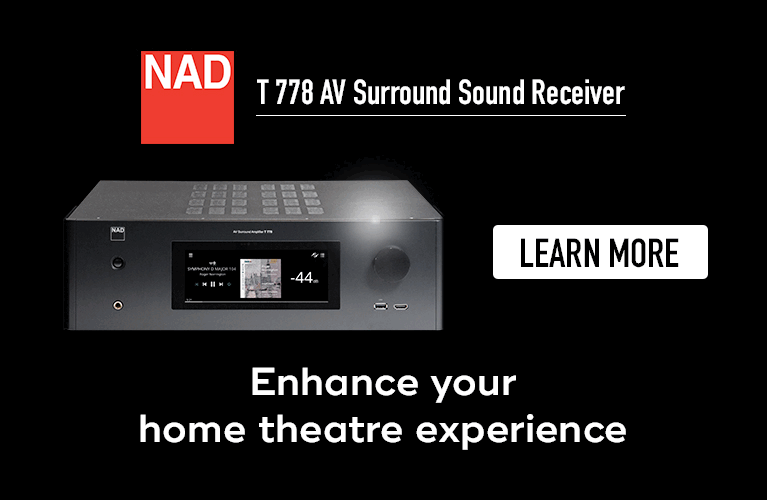This feature has been a longer-than-normal time coming. Montreal Audiofest 2023, which Jason Thorpe and I covered for SoundStage! Global, ran from March 24 to 26. We typically run an article highlighting the show’s best products on the first day of the month following the show. But two days after Audiofest, I flew to England to visit Monitor Audio and Vivid Audio. So there wasn’t enough time for me to write a best-of-show report in time for publication on April 1. My backup plan was to write it up in time for May 1. But almost as soon as I got home from the UK, I got sicker than hell. My doctor told me that it was only a bad cold, but the damn thing lasted almost three weeks, and I didn’t want to do much but lie in bed.

As a result, the whole month of April was basically a write-off for me. As I finish this report, it’s now the beginning of May. I’ll soon be leaving for Munich, Germany, to cover High End 2023, along with fellow SoundStagers Jason Thorpe and Edgar Kramer. Munich High End runs from May 18 to 21, which means this article is being published 11 days after the Munich show ends. Our coverage of High End 2023 is already online. My article detailing our picks for the Best of High End 2023 will run on July 1. I apologize for falling behind—that awful cold is my excuse. Without further ado, here are my selections for the Best of Montreal Audiofest 2023, with all prices in Canadian dollars.
Bryston BP-19 preamplifier
Bryston’s BR-20 combines an analog preamplifier, network streamer, digital-to-analog converter (DAC), and headphone amplifier in a single chassis. It’s a kick-ass product for someone who wants all those functions in one box. We presented it with both Reviewers’ Choice and Recommended Reference Component awards as a result of Gordon Brockhouse’s and Evan McCosham’s reviews.
What about listeners who don’t want all those features in one box? That’s where the new BP-19 preamplifier fits in. It’s priced at $5000 and is still so new that it wasn’t even on the company’s website when I finished this report, six weeks after its debut. But the BP-19 was at Montreal Audiofest 2023 on active display.
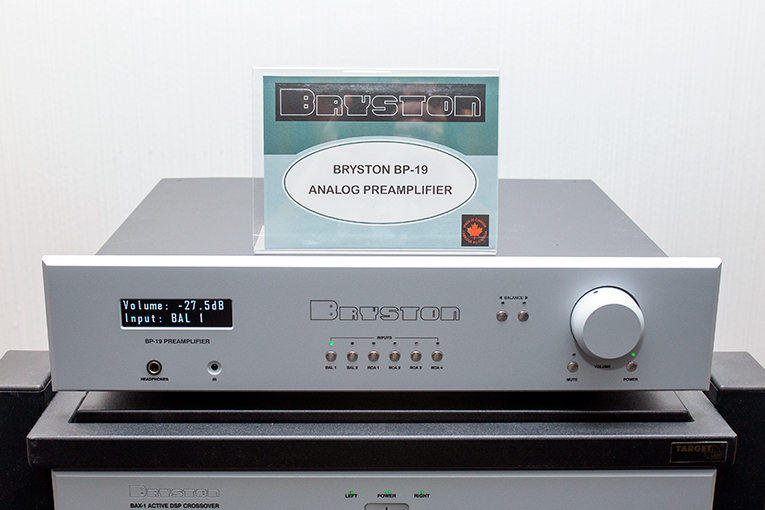
Bryston CEO James Tanner told me that the BP-19 is basically the BR-20 without the digital stuff. So it’s an analog preamplifier and headphone amplifier with balanced (XLR) and single-ended (RCA) inputs and outputs. The large volume knob on the faceplate’s right and the display screen on the left are the same as those on the BR-20. According to designer Dan Marynissen, the BP-19 delivers the same 12dB of gain that the BR-20 provides, but it betters the extremely quiet BR-20 by 2–3dB. That means it’s among the quietest preamplifiers in the world. Suffice it to say that we want to get one of these in for review.
Totem Acoustic Bison Monitor loudspeaker
Totem Acoustic founder and designer Vince Bruzzese has long been known for producing small speakers that provide big sound with powerful bass. Totem’s newest small speaker, the Bison Monitor, follows that formula to a tee.
At $2500 per pair, the Bison Monitor isn’t cheap, but it’s made in Canada and comes in a painted finish called Satin White, or in two real-wood veneers: White Oak or Black Ash. It has a 1.3″ soft-dome tweeter and a 5.25″ midrange-woofer crossed over at 2.5kHz. The Bison Monitor is the smallest model in the Bison line—above it are the Tower and Twin Tower floorstanders, priced at $3500 and $4500 per pair respectively.
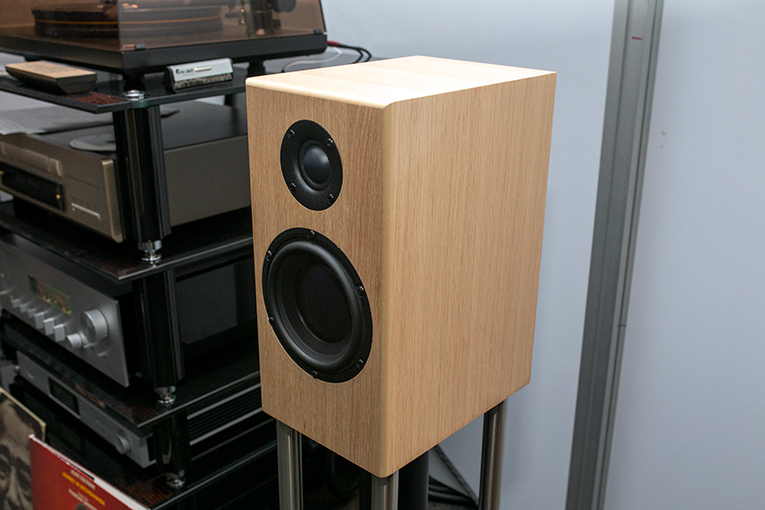
The main reason I included the Bison Monitor in the Best of Montreal Audiofest 2023 is explained in my report on SoundStage! Global: “When I visited, a pair of Monitors were playing so loudly and with such deep bass, it caused me to walk over and put my hand on one of the Twin Towers, because I thought I was hearing the big floorstanders.” Given Totem’s reputation for producing small speakers with big sound, maybe I shouldn’t have been so surprised. But I was smitten by the little Bisons.
Luxman D-07X CD/SACD player–DAC
I’m the kind of audiophile who likes to keep his analog and digital electronics separate, so a product like the Bryston BP-19 appeals to me much more than the BR-20. But I don’t necessarily want to split digital playback into multiple boxes. For example, I don’t need a disc player and a DAC, because I see little benefit in having them as separate components.
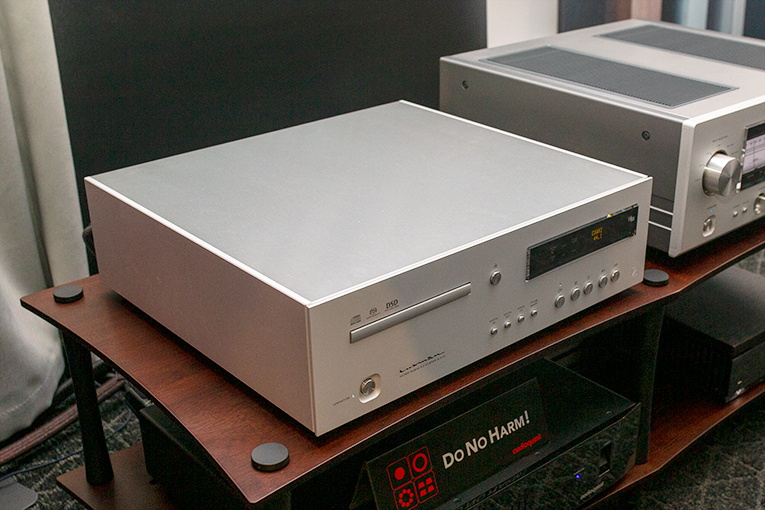
Enter the Luxman D-07X, priced at $13,995. It’s the ideal choice for listeners who want a feature-rich digital component without compromises in terms of performance and build. The D-07X seems to provide just that. Here’s what I wrote when I saw it in Montreal:
For disc playback, it supports all types of CDs (CD-R, CD-RW, and MQA-CD), as well as SACD. As a DAC, it has coaxial (RCA) and optical (TosLink) S/PDIF inputs that support PCM to 24-bit/192kHz. The USB input can accept PCM data up to 32/768 and DSD data up to 22.4MHz. Capping off the rich feature set are one pair each of single-ended (RCA) and balanced (XLR) outputs. To me, the D-07X looks like the ultimate digital playback machine.
I’ve had plenty of experience with Luxman components and have always come away impressed; not only by their performance, but also by their excellent build quality. From what I could tell in Montreal, the D-07X’s looks extremely well put together, and the sound quality seemed good too. Any compromises in the design weren’t obvious, which is why it stood out as being one of the best products I saw at Montreal Audiofest 2023. As I said in my report, I’d like the SoundStage! Network to get one for review. It could be me who reviews it, or maybe someone else on our team.
Heaven 11 Billie Mk2 integrated amplifier-DAC
I like it when an already-good product is made into something better. Case in point: the Billie integrated amplifier, which I wrote about in my “System One” column in November 2019. Heaven 11 founder Itai Azerad, who’s an industrial designer, funded development of the Billie through a Kickstarter project. The project was successful, no doubt because Azerad’s concept was so compelling.
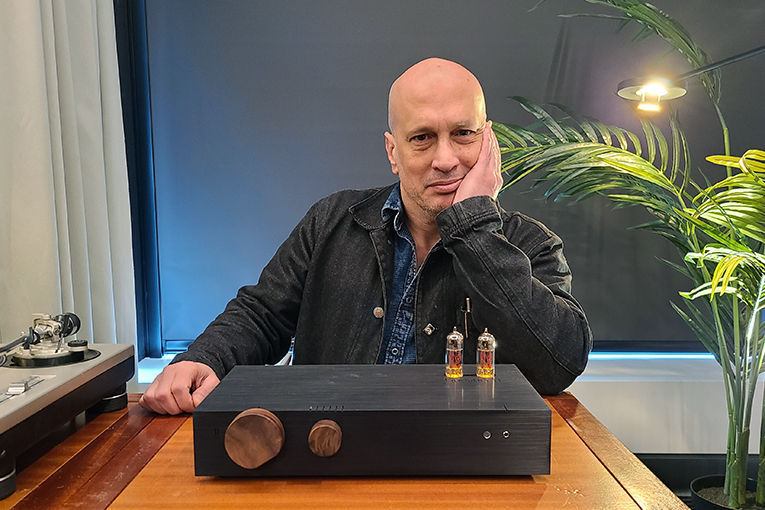 Itai Azerad
Itai Azerad
The original Billie married a class-A, tubed preamp with an ICEpower class-D amplifier section. Azerad gave it a moving-magnet phono stage, a DAC, and a headphone amp with a 1/8″ output. He also equipped it with enough wired inputs for most systems—two analog line-level inputs (RCA), a moving-magnet phono input (RCA), and two optical S/PDIF inputs (TosLink)—and included Bluetooth connectivity for those willing to accept a lossy connection, but who want the convenience of wireless playback. The Billie showed Azerad’s talents as an industrial designer. It sported distinctive all-metal casework—aluminum and stainless steel—which he further dressed up with eye-catching wooden knobs for volume control and input selection. Those knobs helped to define the Billie’s look, as did the two tubes sprouting out the top.
Azerad was off to a good start with the Billie, because it was, overall, a good integrated amp at a reasonable price. But there were some areas that could be improved. Its output was only 60Wpc into 8 ohms, which is enough power for most systems, but might not be enough for some. Furthermore, the headphone output wasn’t very good—with the headphones I used, the sound was thin. I told Azerad that before my review appeared, and he agreed. You have to admire honesty.
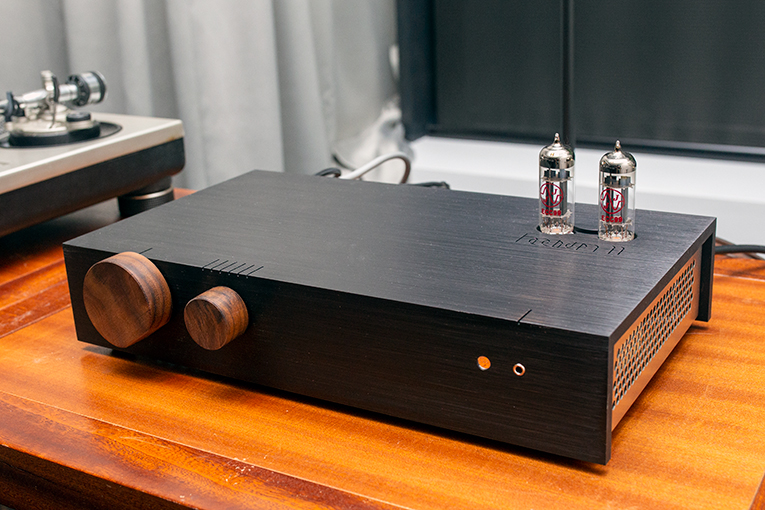
Enter the Billie Mk2, which Azerad showed at Montreal Audiofest. It’s similar to the original Billie. Whereas the original Billie cost under $2000, this Mk2 version costs $2495. But there are many improvements that justify the price increase. The biggest changes are a twofold increase in power—120Wpc into 8 ohms—and a redesigned headphone amp. There are subtle changes as well, such as improved preamp and phono stages, better Bluetooth connectivity, a more precise volume control, and upgraded casework, though the overall look remains the same. The Billie Mk2 has a coaxial S/PDIF input (RCA), but at the expense of one optical S/PDIF input, which I think is a good tradeoff, because not many people need two optical inputs. Azerad also told me the Billie Mk2 powers itself off after 30 minutes of inactivity, which as I pointed out in my 2019 review, the original Billie didn’t do.
As I mentioned in my Montreal Audiofest 2023 report on Global, it’s not easy for new companies to make it in the crowded hi-fi scene—many participate in one show, then you never see them again. To stick around, you need a good product that differentiates itself from competing products, and is appropriately priced. I’m glad to see the Heaven 11 brand make it this far, and I’m glad to see the original Billie, which was good to begin with, become even better. This is another product I’m hoping we can review.
Catching up
As I mentioned at the beginning, this article was written before I departed for Munich to cover High End 2023. But it’s slated for publication on June 1—about ten days after I return. I hope I don’t get sick in Munich, but getting sick at tradeshows is not unheard-of. Thankfully, I have a lot of time before the Best of High End 2023 report goes live, so I’m confident that you’ll see my Best of High End 2023 selections in this space on July 1.
. . . Doug Schneider
das@soundstagenetwork.com






















